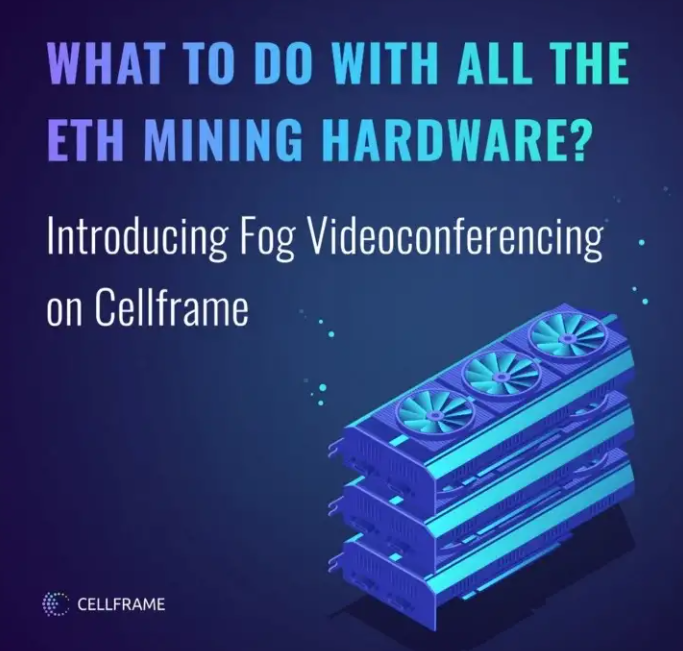What To Do With All the ETH Mining Hardware? Introducing Fog Videoconferencing on Cellframe
Category: About

With the advent of the Ethereum merge, lots of people with big, powerful arrays of video cards will be looking for something to do with them. Luckily, Cellframe is set to offer a profitable new use for these machines: distributed video conferencing and media streaming.
Building on the Cellframe network, the team has created a plugin that allows users to earn by participating in a blockchain-enabled fog computing network for conferencing, live streaming, and content delivery. In addition, this has a wide range of applications beyond content delivery. The first public product on Cellframe based on this plugin, however, will be a video conference tool called ConfCall. The plugin can also be used to serve media content to end-users in CDN networks, which are used by video-on-demand providers like YouTube.
ConfCall will be a parachain on the Cellframe network. The first major Cellframe parachain to be launched as a public-facing product was KelVPN, which has a similar business model to ConfCall. Node operators can rent out their connectivity and/or computing power to the t-dApp, getting tokens as a reward. As a service-oriented blockchain, Cellframe enables developers to create t-dApps, which network participants can run in order to receive fees from users.
All those Ethereum miners with powerful video cards can now put their machines to good use by renting out video-processing power for re-streaming conference call media or serving content on demand. Additionally, regular PCs and even tiny Raspberry Pi’s (where video cards often sit idle) can also be monetized in this way.
For a more detailed description of the fog computing infrastructure involved in this plugin, we can look at the following flow chart:

Here we can see how the Cellframe nodes compete and take on different roles in the network: encoding, balancing (optimizing routes), acting as a server, etc.
Since the Cellframe network will have thousands of nodes, the potential throughput capacity of ConfCall is very large. When an order for the “server” role is placed on the network, hundreds of potential servers may respond, and a couple of dozen of the fastest ones will be chosen to support a given conference call.
This “fog computing” solution is a viable replacement for major cloud-computing server farms on the backend of Zoom and GoogleMeet, as well as YouTube and their competitors. Not only does Cellframe incentivize people with extra computing power to participate in providing distributed services, thus lowering server costs and saving energy. It also has the potential to make a faster version of Zoom, capable of hosting hundreds of people in one conference call.
The distributed nature and high capacity of ConfCall solves a major pain point for today’s conference call users: insufficient capacity to host large conference calls. With ConfCall, each user’s hardware and connection can be engaged in the most optimal (and ecological) way. And now, idle Ethereum miners will be incentivised to jump in and help out as well. The blockchain-enabled fog-computing version of videoconferencing is truly a win-win proposition.
Recent news
